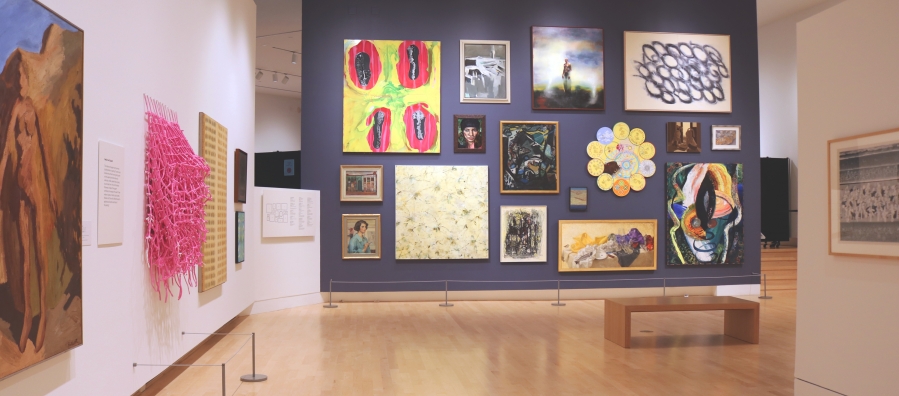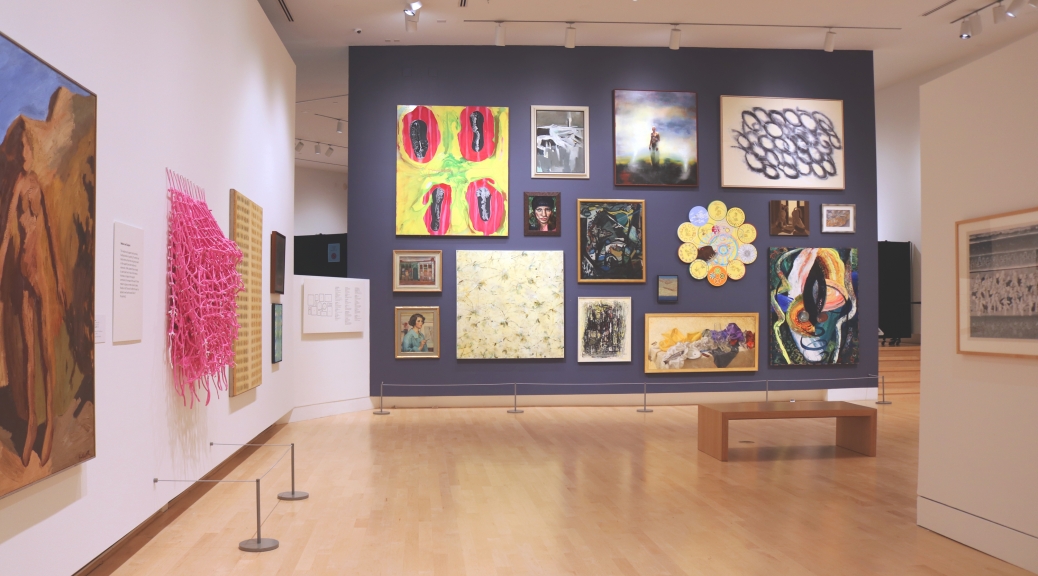Though Tacoma Art Museum was founded in 1935, it didn’t begin building the collection until 1961. It has now grown to include more than 5,100 objects and has been shaped in significant ways by a number of notable gifts. The earliest donations, called the legacy collections, included American, Asian, and European art as well as art from the Pacific Northwest. TAM’s staff and supporters originally aspired to build an encyclopedic collection of world art. Over the decades, however, focus shifted to collecting and studying the art of our region.
Today, Northwest art accounts for approximately seventy-five percent of the collection. The 2012 gift of the Haub Family Collection of Western American Art offers a broader geographical and cultural setting for the Pacific Northwest works, while the early legacy gifts continue to provide national and international contexts for developments in Northwest art.
How does the museum acquire new works?
A large number of the works in TAM’s collection have been gifts. Most were from individuals, but the museum also has received several groups of artworks from corporations such as Washington Mutual and Safeco Insurance.
TAM does not have a lot of funds for purchasing artwork. There are several small endowments restricted to acquiring specific types of objects (ex. Northwest jewelry, American art made before 1940). There is also a general art acquisition endowment that is slowly growing. Endowments are tied to the stock market. Also, some portion of an endowment is always left untouched so that it will continue to grow and provide funds for purchases into the future. Those two factors determine how much is available for purchasing artworks at any particular time.
How do you decide what to add to the collection?
Any additions to the collection go through several layers of review. When TAM is offered a work, or looking at purchasing something, the curators and director discuss whether it is a good fit. Does it make sense with our focus on art of the Northwest and greater western region and add to that history? Do we already have something like it? What kind of shape is it in? Our discussions of these and other questions are guided by our plans for how we want to grow TAM’s collection to better do our work and support our mission.
If the curators and director agree, the work is then presented to TAM’s Collection Committee and Board of Trustees for acceptance. The museum is offered hundreds of works each year but only a small percentage are accepted.
Why don’t you take everything?
When TAM adds an artwork to the collection (called accessioning) the museum is committing to care for it permanently. And it’s not as simple as just renting a very large storage locker. To best preserve artworks they have to be stored under controlled temperature and humidity levels, be housed in ways that prevent strain or pressure that could damage them, and be protected from fire, earthquake, and other disasters. The collection also, of course, needs to be kept secure and staff are needed to keep track of and care for it all.
Museums also don’t build collections just to hold them in storage. They are there for study, exhibition, and to preserve a variety of voices, histories, and experiences. On average, museums only have about 3 to 5% of their collection on view at any one time; TAM generally has about 10% on view. We also lend artworks to other museums so that more work is out on public view. In the past decade, online collection databases have been rapidly evolving and are making the stored objects more and more accessible. However, all of these things require people to track, catalogue, and photograph artworks and maintain the database.
Having a collection is expensive and requires a lot of resources and space. If TAM had taken everything ever offered since 1961 the museum would need another whole building (or possibly two!) just to house everything. Growing the collection is a balancing act between making it the best resource possible and being able to properly care for it now and in the future.
Do you ever remove works from the collection?
Yes, sometimes through a process called deaccessioning. Deaccessioning is approached carefully and done solely to improve the quality, scope, or appropriateness of the collection and to support the museum’s mission. Objects go through many levels of review before the director and museum curators recommend anything for deaccessioning to the museum’s Collection Committee and Board of Trustees, who have final approval.
Proceeds from sales of deaccessioned art are used only to purchase artworks. The names of the donors of deaccessioned works are connected to these future art purchases so that their gift continues to be acknowledged. Further information on works that have been deaccessioned from the collection can be found here.
What do you see as the greatest strength of TAM’s collection?
I think we are incredibly lucky to be focused on a particular region and for it to be the Northwest which has such a rich art history and robust contemporary art scene. And the museum has been acquiring Northwest art for over 60 years so that is a great resource that allows us to explore many topics, not only regional but also national and international.
What is the collection’s greatest shortcoming?
The collection lacks diversity. It is historically true of most museum collections, including TAM’s, that a high percentage of the artworks are by white, male artists. Only 7% of the artists represented in our collection are people of color; only 20% are women or female-identified. If our collection is to truly reflect our region and its art history, we have a lot of work to do. This is an important emphasis for our collecting going forward and particularly for any purchases the museum makes. We have dedicated our acquisition funds for at least the next several years solely toward this effort which will help. But we also need to keep this intention in mind when building relationships with collectors and discussing gift offers.
Anything new you’re really excited about?
Always! Just before, and even during the pandemic, we were fortunate to be able to add some wonderful new gifts and also make a few purchases. You’ll be hearing about some of those in future blog posts. A number of them are also on view in the galleries so you can see them in person next time you visit.

